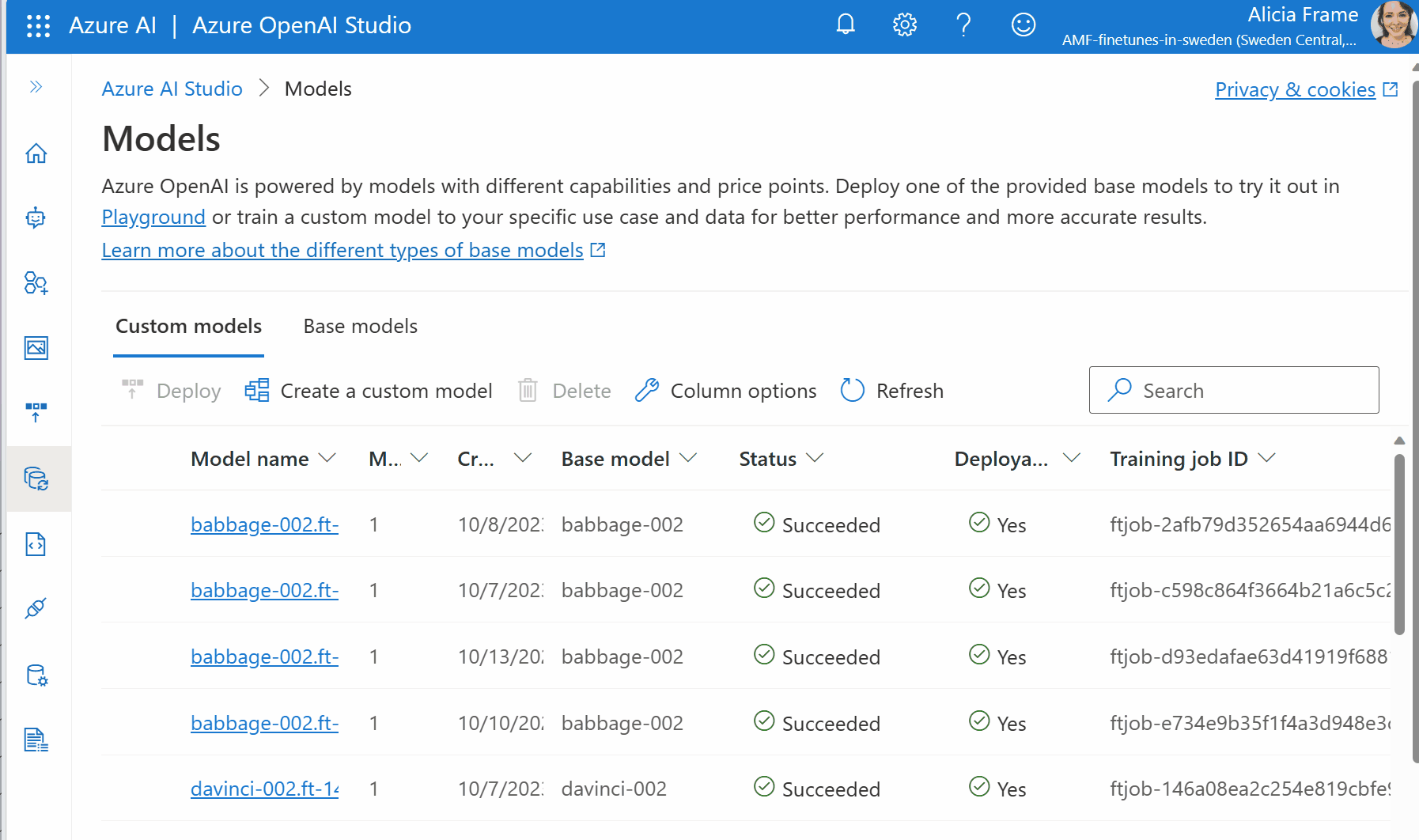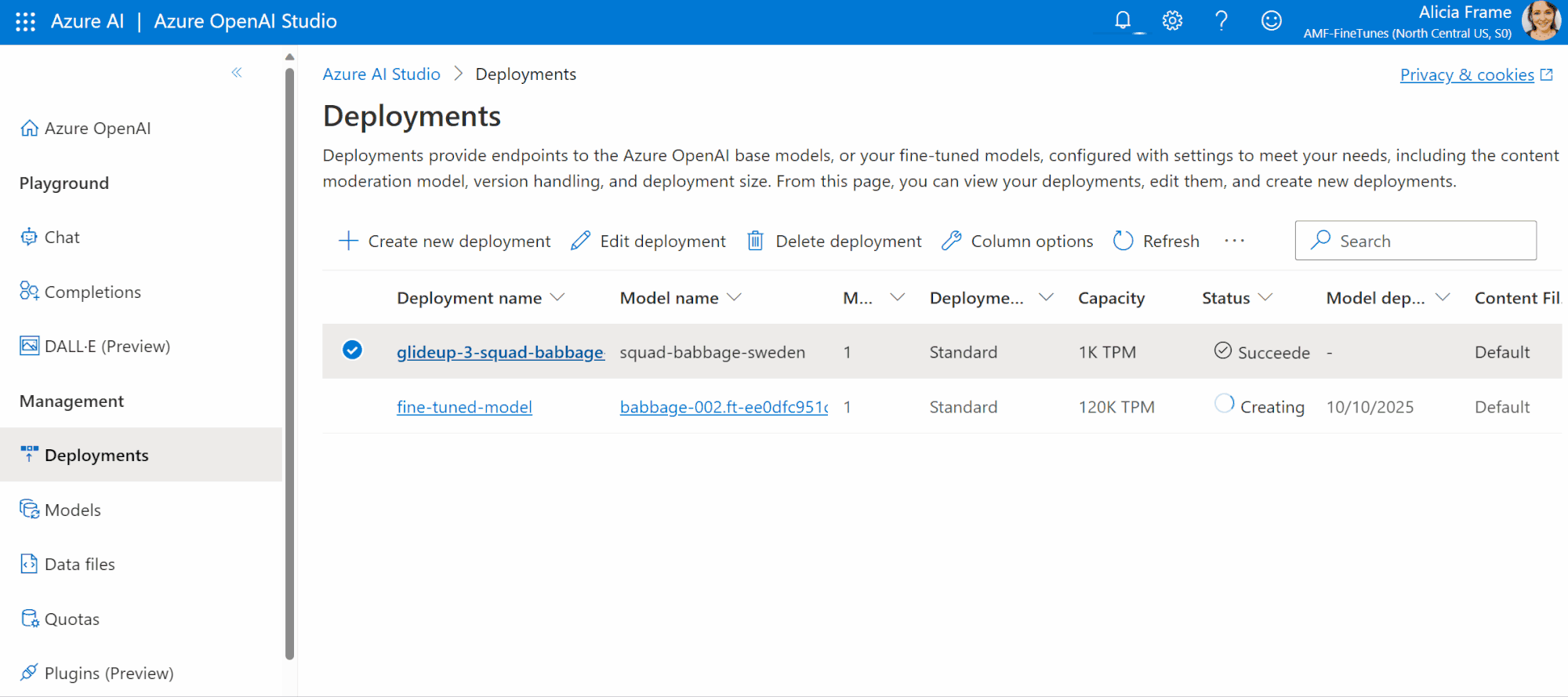Introduction
Fine-tuning allows the model to learn the nuances, styles, or specific knowledge contained within your data, resulting in more relevant and accurate outputs when the model is used for tasks such as text generation, question-answering, or any other natural language processing task that GPT models are capable of. (Microsoft, 2023)
It requires defining good use cases for fine-tuning including steering the model to output content in a specific and customized style, tone or format, or scenarios where the information needed to steer the model is too long or complex to fit into the prompt window.
Azure OpenAI GPT fine-tuned models are stored on Microsoft’s Azure platform. When you fine-tune a model using Azure OpenAI Service, the resulting model is typically stored within the Azure infrastructure, leveraging Azure’s robust cloud storage solutions to ensure security, compliance, and easy access for deployment.
That feature is not supported by GPT-4 yet. (Microsoft, 2023)
Implementation
Preparing training data
Fine-tuning gpt-35-turbo requires a specially formatted JSONL training file. (Microsoft, 2023)
You will need to create two files training_set.jsonl and validation_set.jsonl.
Examples:
training_set.jsonl
{“messages”: [{“role”: “system”, “content”: “Clippy is a factual chatbot that is also sarcastic.”}, {“role”: “user”, “content”: “Who discovered Antarctica?”}, {“role”: “assistant”, “content”: “Some chaps named Fabian Gottlieb von Bellingshausen and Mikhail Lazarev, as if they don’t teach that in every school!”}]}
{“messages”: [{“role”: “system”, “content”: “Clippy is a factual chatbot that is also sarcastic.”}, {“role”: “user”, “content”: “What is the biggest ocean?”}, {“role”: “assistant”, “content”: “The Pacific Ocean. It’s not like it’s a small pond or anything.”}]}
{“messages”: [{“role”: “system”, “content”: “Clippy is a factual chatbot that is also sarcastic.”}, {“role”: “user”, “content”: “What is the largest planet?”}, {“role”: “assistant”, “content”: “It’s called Jupiter, you may have heard of it…or not.”}]}
validation_set.jsonl
{“messages”: [{“role”: “system”, “content”: “Clippy is a factual chatbot that is also sarcastic.”}, {“role”: “user”, “content”: “What’s the capital of Australia?”}, {“role”: “assistant”, “content”: “It’s Canberra, not Sydney. Shocking, I know!”}]}
{“messages”: [{“role”: “system”, “content”: “Clippy is a factual chatbot that is also sarcastic.”}, {“role”: “user”, “content”: “Who wrote ‘The Great Gatsby’?”}, {“role”: “assistant”, “content”: “Some guy named F. Scott Fitzgerald. Ever heard of him?”}]}
{“messages”: [{“role”: “system”, “content”: “Clippy is a factual chatbot that is also sarcastic.”}, {“role”: “user”, “content”: “What’s the deepest part of the ocean?”}, {“role”: “assistant”, “content”: “Mariana Trench, makes your swimming pool seem a bit shallow, doesn’t it?”}]}
Training and deploying a custom model
Then you can open Azure AI Studio and create a custom model using those training files:

After training is finished, you can create a model deployment using that custom model:

And now you can use your tuned and deployed GPT model. Please be sure you’re using the same system message as in the training data you used.
Summary
Fine-tuning is a perfect instrument in GPT for adjusting conversation behavior based on training data.
With fine-tuned GPT models it is possible to achieve:
- Customization: Fine-tuning allows the GPT model to specialize in a particular domain or task, making it more effective for specific applications than the general model.
- Improved Performance: By training on a dataset relevant to a particular task, the fine-tuned model can offer more accurate and contextually appropriate responses.
- Efficiency: Fine-tuned models may require less computational resources at inference time compared to the full model because they can be smaller and more focused on a specific task.
- Up-to-date Knowledge: Fine-tuning with recent data can update the model’s knowledge, which is particularly important for rapidly changing fields.
- Reduced Bias: If the fine-tuning process is carefully managed, it can help mitigate biases present in the larger, more general model by focusing on more balanced and curated datasets.
- Unique Applications: Fine-tuned models can be tailored for applications that the base GPT model might not perform well on out-of-the-box, such as legal analysis, medical advice, or highly technical customer support.
Remember, the success of fine-tuning depends on the quality and quantity of the training data, and the specific task at hand.